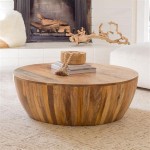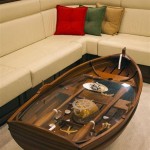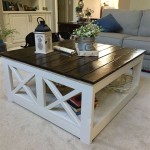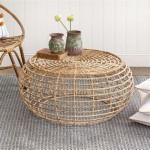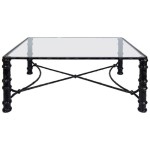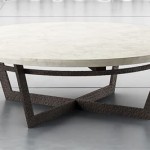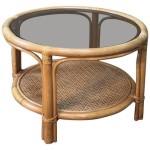How Do You Measure the Size of a Round Table?
Determining the size of a round table involves measuring specific dimensions. These measurements provide crucial information for various purposes, from ensuring adequate dining space to selecting appropriately sized tablecloths. Understanding the different measurement methods allows for accurate assessment and informed decisions.
The primary measurement for a round table is its diameter. The diameter represents the length of a straight line passing through the center of the circle and connecting two points on the circumference. This measurement is crucial for determining the overall footprint of the table and its capacity to accommodate individuals.
Measuring the diameter can be accomplished in a few ways. One of the most straightforward methods involves using a measuring tape. Extend the tape across the widest part of the table, ensuring the tape passes through the center point. The measurement obtained is the diameter. For larger tables, a long measuring tape or two shorter tapes and a straight edge may be necessary.
Another method involves measuring the radius and doubling the value. The radius is the distance from the center of the circle to any point on the circumference. Locate the center of the table and measure the distance to the edge. Multiplying this measurement by two provides the diameter.
In situations where the center is not easily accessible, such as with a pedestal table, one can employ the circumference method. The circumference is the distance around the outside edge of the circle. Wrap a measuring tape around the perimeter of the table, ensuring a snug fit against the edge. Once the circumference is measured, the diameter can be calculated using the formula: Diameter = Circumference / π (pi, approximately 3.14159).
Understanding the appropriate tools for measuring is essential. A standard measuring tape, preferably one with clear markings and sufficient length, is the most commonly used tool. A flexible tape measure is particularly beneficial for curved surfaces. For larger tables, a long, rigid measuring tape or a combination of shorter tapes and a straight edge can help ensure accuracy.
Accuracy in measurement is paramount for practical applications. When measuring, ensure the tape measure lies flat against the table surface and is not twisted or angled. For circumference measurements, maintain consistent tension on the tape to avoid inaccuracies. Taking multiple measurements and averaging the results can further enhance accuracy.
Beyond diameter, other measurements can be valuable depending on the specific needs. Table height, measured from the floor to the table's top surface, is essential for determining comfortable seating arrangements. Apron height, the distance from the bottom edge of the tabletop to the top of the table base or legs, is crucial for legroom and chair clearance.
For extending dining tables, additional measurements may be required. Leaf size, the dimensions of each leaf added to expand the table, contributes to the overall length and capacity. The extended table length should be measured with all leaves in place to determine the fully expanded size.
Different table shapes require different measurement approaches. Round tables, as discussed, primarily rely on diameter. For square or rectangular tables, length and width are the critical measurements. Oval tables require measuring the length and width at their widest points. Understanding these nuances ensures appropriate measurements for various table shapes.
Practical applications of these measurements are numerous. Determining the appropriate tablecloth size requires knowing the table's diameter and desired drop length. Calculating seating capacity involves considering the diameter and allowing sufficient space per person. Planning furniture placement within a room necessitates accurate table dimensions to ensure comfortable traffic flow.
Selecting the correct table size for a given space involves considering the room's dimensions and intended use of the table. A smaller diameter table might be suitable for a compact dining area, while a larger diameter table would be more appropriate for accommodating larger gatherings. Considering the surrounding furniture and allowing ample space for movement is crucial in the selection process.
Precise measurements play a crucial role in various aspects of table selection and utilization. From determining tablecloth size to maximizing seating arrangements, accurate measurements ensure functionality and optimize the use of space. Understanding the methods and principles of measuring round tables empowers informed decision-making and contributes to a more practical and efficient use of this essential piece of furniture.

How Do I Measure My Table To Order A Glass Top

How To Choose The Correct Size Tablecloth For Your Table

How To Measure Your Table For A Tablecloth Wipe Away Tablecloths

How To Choose Tablecloths Understanding Correct Measurements Your Chair Covers Inc

3 Easy Ways To Measure Tablecloth Sizes Your Table Linens Size Guide

Yardage For Homemade Table Cloths Cloth Diy Tablecloth Sofa

How To Choose The Size Of A Table

The Dining Room Table Size Guide Ideal Sizes For 4 6 And 8 Seater Tables

Let S Talk Linens The Ultimate Guide To Table Linen Sizes Party Al Ltd Pink Hippo Blog

Made To Measure Linen Union Round Tablecloth Express Tablecloths Textiles
Related Posts

